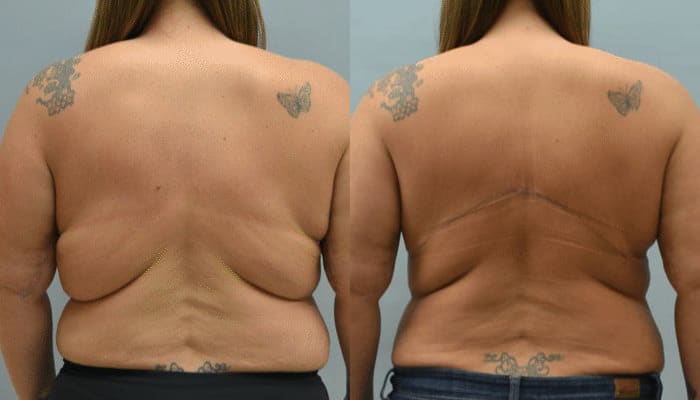Thigh Lift Procedure Overview
Surgery Process
Thigh lift surgery, a surgical procedure, aims to reshape the thigh area. It does so by removing excess skin and fat. This process enhances the overall look of thighs, making them more toned and contoured.
Surgeons follow specific instructions based on the type of thigh lift. The full thigh lift surgery involves more extensive operative measures. They might cut along the thigh’s inner part or around the hip, depending on the extent of excess skin.
Goals
The primary goal is improving the contour of thighs and lower body. This surgical procedure not only removes excess skin but also tightens the remaining skin for a smoother look. It significantly boosts confidence by enhancing body image.
Candidacy
Ideal candidates are those in good health with realistic expectations about what thigh lift surgery can achieve. They should follow all pre- and post-operative measures closely for optimal results. Understanding that scars are a part of this transformative journey is crucial.
Understanding Thigh Lift Scarring
Scar Formation
Scars are a natural outcome after any surgical procedure, including thigh lifts. They form as the skin heals from incisions made during surgery. Initially, these scars might appear red and somewhat raised but don’t worry. This is a normal part of the healing process.
Over time, these marks typically become less noticeable. They gradually fade and flatten out. However, it’s important to have realistic expectations. Complete disappearance is unlikely.
Scar Characteristics
Thigh lift scars have distinct features based on the surgery’s extent and technique used. Generally, they run along the inner thigh or groin area. Their length and visibility vary from person to person.
Initially, scars may seem prominent due to their red and raised appearance. With proper care and time, they often fade significantly.
Common Concerns
Many patients worry about the visibility of their scars post-surgery. It’s crucial to understand that while surgeons strive to minimize scarring, some visible marks will remain.
Misconceptions about scarless surgeries can lead to unrealistic expectations. Remember, scars are evidence of your body’s healing process. They signify the journey towards your desired body contour.
Types of Thigh Lift Scars
Crescentic Scar
Crescentic thigh lift scars are less noticeable. They hide in the groin fold. This method suits those with minimal excess skin. Patients can wear high-cut clothing without revealing scars.
Clothing and swimwear choices remain broad post-surgery. Confidence in appearance boosts significantly.
Extended Scar
Extended medial thigh lift scars run from the groin down to the knee, inside the thigh. This option addresses more significant skin excess. Scars are longer and more visible than crescentic ones.
Choosing clothing requires more thought. Long dresses or pants help conceal scars effectively. Swimwear that offers more coverage is also preferred.
Outer Thigh Scar
Outer thigh lift involves an incision that extends from the groin around the hip. This type of scar impacts outer thigh contouring directly. It’s more extensive, but it allows for dramatic improvements in shape.
Post-recovery, selecting high-waist swimwear or clothing that covers the hip area becomes essential. Yet, many find this a worthy trade-off for enhanced body contours.
Location of Thigh Lift Scars
Strategic Placement
Surgeons place thigh lift scars carefully. They aim for areas hidden by most clothing. This includes the inner thigh and along the groin line.
Scars in these locations blend with natural body folds. This makes them less noticeable. Patients find comfort knowing their scars are not easily seen.
Visibility Factors
The visibility of scars varies. It depends on the type of thigh lift and individual healing.
Inner thigh lifts often result in less visible scars than outer lifts. Personal skin healing also plays a big role. Some people may see their scars fade significantly over time.
Aesthetic Outcome
Strategic scar placement can improve surgery results. Surgeons work to ensure scars are as inconspicuous as possible.
This careful planning enhances the overall aesthetic outcome. Patients appreciate the thoughtful approach to minimizing scar visibility.
Preventing Thigh Lift Scars
Pre-Op Measures
Understanding the location of thigh lift scars sets the stage for effective prevention strategies. Before surgery, certain measures can significantly reduce the risk of excessive scarring. It starts with adopting a healthy lifestyle. This includes eating a balanced diet rich in vitamins and minerals that support skin health and healing.
Patients should also avoid certain medications and supplements known to increase bleeding, as they can affect scar formation. Consulting with the surgeon about what to take or avoid is crucial.
Post-Op Care
Following surgery, adhering to the surgeon’s post-operative care instructions is vital for optimal healing. This involves keeping the incision sites clean and dry and attending all follow-up appointments. Surgeons often recommend specific products or treatments that can aid in minimizing scar appearance.
It’s important to protect healing scars from direct sunlight, as UV rays can darken them. Using a high SPF sunscreen or covering the area can prevent this.
Lifestyle Adjustments
Post-surgery lifestyle adjustments play a significant role in preventing scars from becoming more noticeable. Avoiding smoking is critical, as it hampers blood flow and slows down the healing process. Maintaining a stable weight is also essential; significant fluctuations can stretch or widen scars, making them more visible.

Managing Thigh Lift Scarring
Post-Op Care
After undergoing surgery to remove loose skin on the thighs, managing the resulting scars is crucial for optimal healing. Silicone gel sheets stand out as an effective tool in this process. They work by hydrating the scar tissue, which can significantly reduce the scar’s appearance over time.
Scar massage is another beneficial technique. It involves gently massaging the scarred area to promote blood flow and flexibility in the skin. This can help minimize scarring by breaking down the scar tissue.
Sun Protection
Protecting your scars from the sun is vital for preventing darkening. Direct sunlight can cause scars to become more noticeable and delay their healing. Applying a broad-spectrum sunscreen with a high SPF is a simple yet effective way to ensure your scars heal uniformly and are less visible.
Professional Treatments
For those seeking further improvement in their thigh lift scars, professional treatments offer promising results. Laser therapy has been shown to reduce redness and improve the texture of scar tissue. Microneedling, another innovative treatment, promotes collagen production, leading to smoother and less noticeable scars.
Incorporating these methods into your scar management routine can significantly enhance incision healing and lead to better cosmetic outcomes.
Addressing Existing Thigh Scars
Scar Treatments
For those seeking to improve the appearance of thigh lift scars, several options exist. Non-invasive treatments can offer significant improvements without the need for additional surgery.
Laser resurfacing and IPL (Intense Pulsed Light) therapy stand out as effective methods. They work by targeting scar tissue, promoting new skin growth, and reducing inflammation. This results in scars that are less noticeable and more in line with your skin’s natural tone.
Microneedling is another option. It involves creating tiny punctures in the skin to stimulate collagen production. Over time, this can help scars blend more seamlessly with surrounding skin.
Surgical Revision
In cases where non-invasive treatments aren’t enough, surgical revision may be considered. This procedure involves removing or altering scar tissue to create a less visible scar.
It’s usually recommended for scars that have fully healed but remain prominent or cause discomfort. The process can involve excising excess skin around the scar or repositioning it to a less noticeable area, such as the groin crease.
Patients should expect a period of rest and care post-surgery to ensure optimal healing. Following your surgeon’s guidance on managing stitches and reducing inflammation is crucial for minimizing scar appearance after revision.
Combining Cosmetic Procedures with Thigh Lift
Comprehensive Transformation
Patients often seek a holistic improvement in their body’s appearance. Combining thigh lift surgery with other body contouring procedures offers a more comprehensive transformation. This approach allows for the simultaneous addressing of multiple areas, enhancing overall proportions and symmetry.
A thigh lift targets excess skin and tissue in the thigh area. When paired with liposuction, it can further refine the legs’ contour by removing stubborn fat deposits. A tummy tuck, on the other hand, tightens abdominal muscles and removes excess skin, complementing the smoother, lifted look of the thighs.
Planning Considerations
Undergoing multiple cosmetic surgeries requires careful planning. Patients should have a thorough consultation with their plastic surgeon to discuss their goals and understand the implications of combined procedures.
Timing is crucial. Surgeons may perform some procedures simultaneously to minimize recovery time and exposure to anesthesia. However, in certain cases, staging surgeries at different times ensures safer outcomes and better healing.
Recovery from combined surgeries demands patience and adherence to post-operative care instructions. Wearing a compression garment supports healing by reducing swelling and improving skin retraction. Maintaining a healthy lifestyle, including exercise and nutrition, is vital for sustaining results.
Summary
Thigh lift surgery can significantly enhance your body’s contours, but it’s natural to worry about scars. This article has guided you through what to expect, from the types and locations of scars to how you can prevent and manage them effectively. Knowledge is power, and understanding these aspects ensures you’re well-prepared for a smoother recovery and optimal results. Remember, the journey doesn’t end with surgery; proactive scar management plays a crucial role in achieving the best aesthetic outcome.
If you’re considering a thigh lift, take this information as your first step towards making an informed decision. Consult with a certified plastic surgeon to discuss your goals and concerns. They can provide personalized advice tailored to your needs, ensuring you feel confident at every stage of the process. Ready to take the next step? Schedule your consultation today and move closer to the body you envision.
Frequently Asked Questions
What is a thigh lift surgery?
A thigh lift surgery is a cosmetic procedure aimed at reshaping the thighs by reducing excess skin and fat, resulting in smoother skin and better-proportioned contours of the thighs and lower body.
How visible are thigh lift scars?
Thigh lift scars are permanent but will fade over time. Their visibility depends on the specific technique used, your body’s healing process, and how well you follow post-operative care instructions.
Can you prevent scars from thigh lift surgery?
While it’s impossible to prevent scars entirely, you can minimize their appearance by following your surgeon’s aftercare instructions, keeping the incision site clean, avoiding sun exposure, and not smoking.
Where are thigh lift scars located?
The location of thigh lift scars varies depending on the type of procedure performed but they are typically hidden in natural body creases or areas covered by underwear or swimwear.
Is it possible to manage thigh lift scarring effectively?
Yes, effective management includes following all post-surgery care instructions, using recommended scar treatments like silicone sheets or gels, and attending all follow-up appointments with your surgeon.
Can existing thigh scars be improved during a thigh lift?
Yes, in some cases, a thigh lift can improve or remove existing scars as part of the procedure. Discuss your specific concerns with your surgeon for personalized advice.
Can I combine other cosmetic procedures with a thigh lift?
Absolutely. Many patients choose to combine a thigh lift with other procedures such as liposuction or a tummy tuck for more comprehensive body contouring results. Consult with your surgeon to determine the best approach for your goals.










